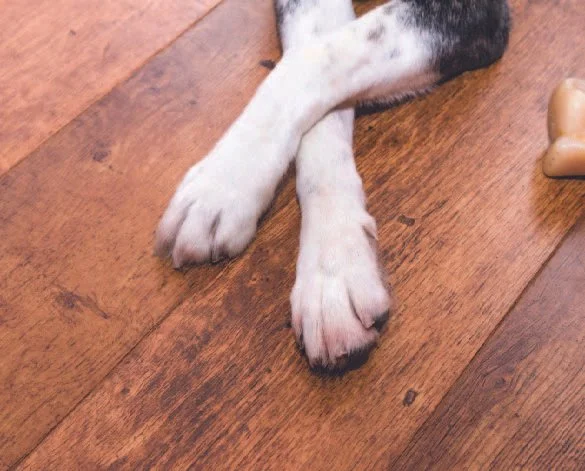Jupiter Hardwood Floors and Pets Can Co-Exist, Especially if You Follow These Guidelines
Flooring Influencer: Ashlee Moore Mike Haas
Let’s take a dive into the relationship between pets and hardwood floors so you’re armed with all the insight you need—especially if you’re planning upgrades or just figuring out how to live comfortably with both paws and planks under one roof.
Hardwood floors are a classic and elegant choice for any home, but when you add pets to the mix, things get more complicated. Dogs and cats can be tough on floors—their claws can leave behind scratches, they track in dirt, and the occasional “uh-oh” moment can lead to moisture damage if not addressed quickly. But with smart choices and a bit of extra care, you don’t have to choose between style and your fur babies.
First, consider the type of wood. Not all hardwood is created equal in terms of durability. Harder woods like hickory, maple, and white oak are much more resistant to wear and tear. Hickory, for example, has a dense grain structure that naturally hides scratches. Red oak is a popular option too, but it’s a bit softer and might show damage more easily. If you’re open to engineered hardwood, it offers even more resilience, thanks to its layered construction, it is less likely to warp or expand due to humidity or accidents.
Next, finish matters. High-gloss floors may look stunning at first, but every little scuff and paw print shows. Satin and matte finishes are far more forgiving. Some finishes are even specifically designed for high-traffic, pet-prone areas—they add an extra protective layer that can help extend the life of your floors. A hand-scraped or wire-brushed texture can also be a brilliant choice because it not only adds character but also helps camouflage imperfections caused by everyday use.
Now let’s talk defense. Placing rugs or runners in areas where your pets love to zoom around—or where they rest the most—provides a soft landing pad for them and an extra layer of protection for your floor. Be sure to choose rugs with non-slip backings to prevent sliding, and opt for machine-washable ones for easy cleaning. It also helps to establish “wipe zones” near doors with absorbent mats to catch dirt and moisture before it reaches your flooring. And regular grooming is a must—keeping nails trimmed and fur tidy can go a surprisingly long way in reducing scratches and shedding.
If you’re really worried about damage or have pets with a lot of energy, you might want to explore alternatives.Luxury vinyl plank (LVP) flooring has come a long way—it can convincingly mimic wood grain, is completely waterproof, and holds up exceptionally well against claws and messes. It’s also softer underfoot, which is gentler on older pets with joint issues. Laminate is another budget-friendly choice, though it’s generally less tolerant of standing moisture, so quick cleanup is key.
In day-to-day life, cleaning habits can make a big difference. Sweeping or vacuuming regularly helps prevent grit from scratching the surface, and using a microfiber mop with a hardwood-safe cleaner keeps the shine without damaging the finish. Avoid harsh chemicals and too much water—think of it as pampering your floors like you would a cherished piece of furniture.
Living with pets and hardwood floors doesn’t have to be a compromise. With a bit of strategy and the right materials, you can have a stylish space that stands up to zoomies, shedding, and the occasional mishap—and your pets can keep ruling their domain in comfort and style.

